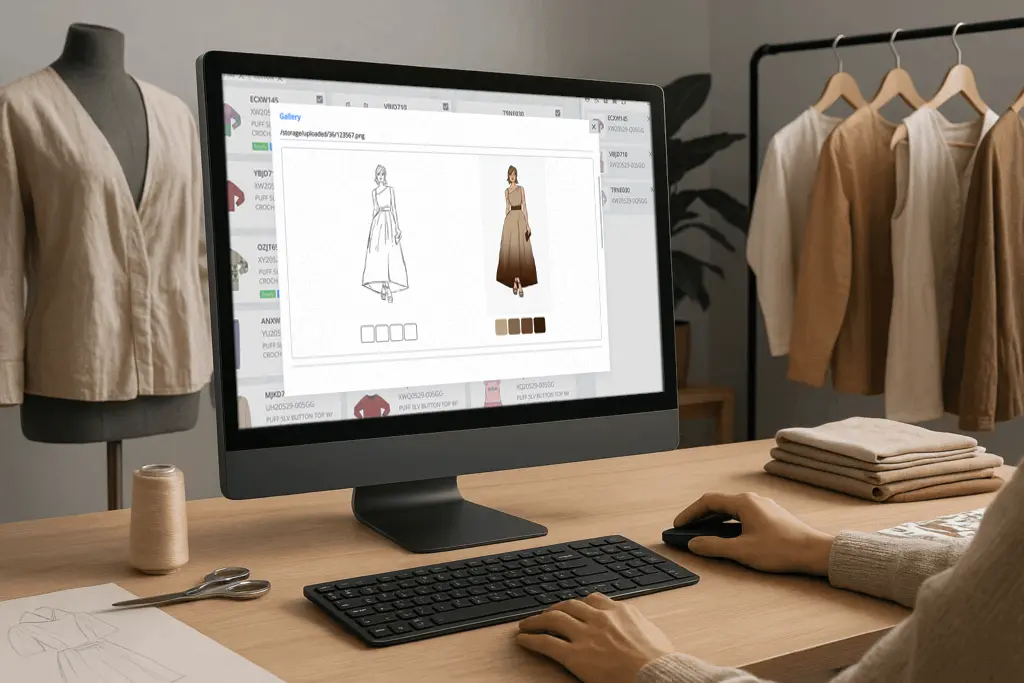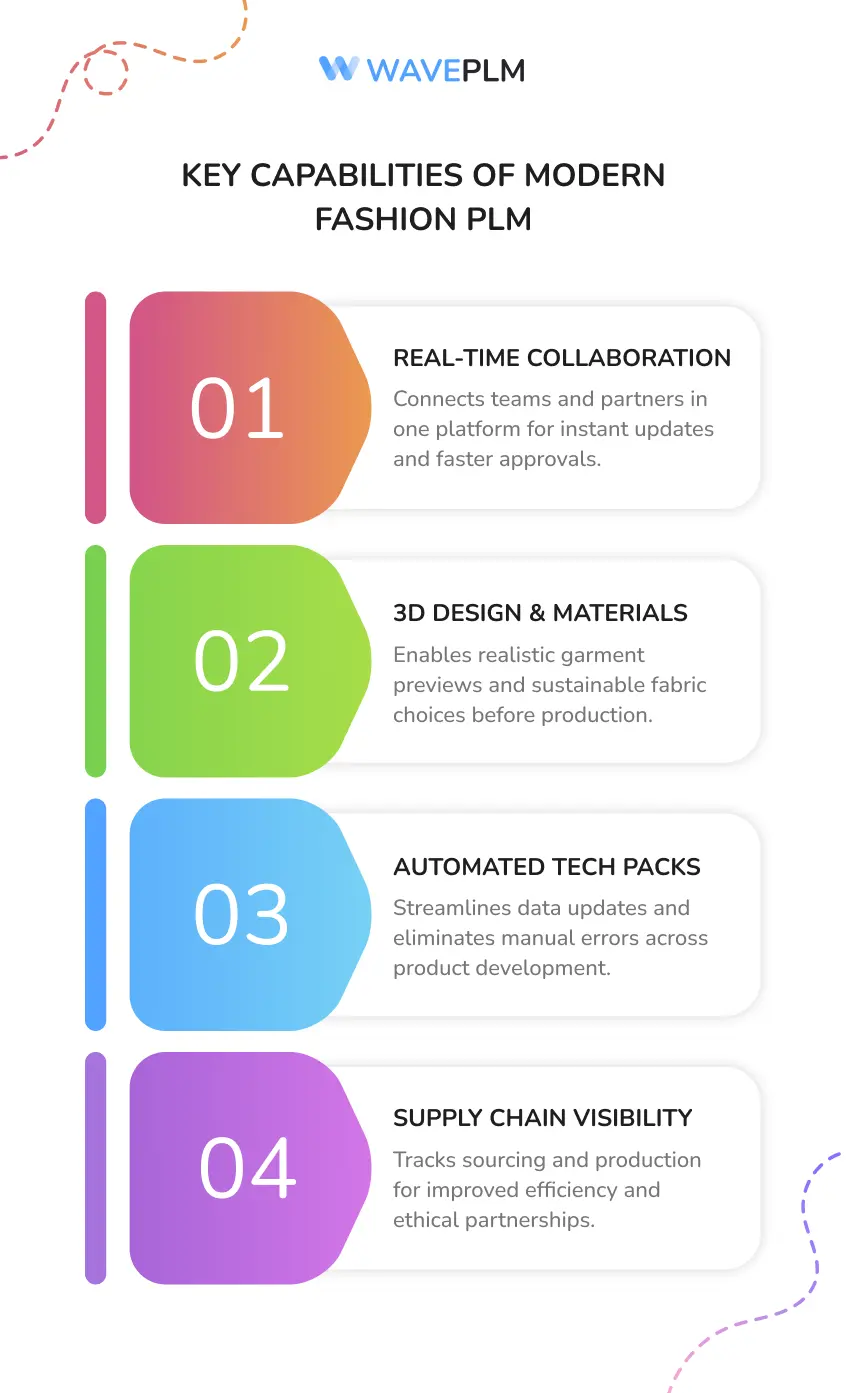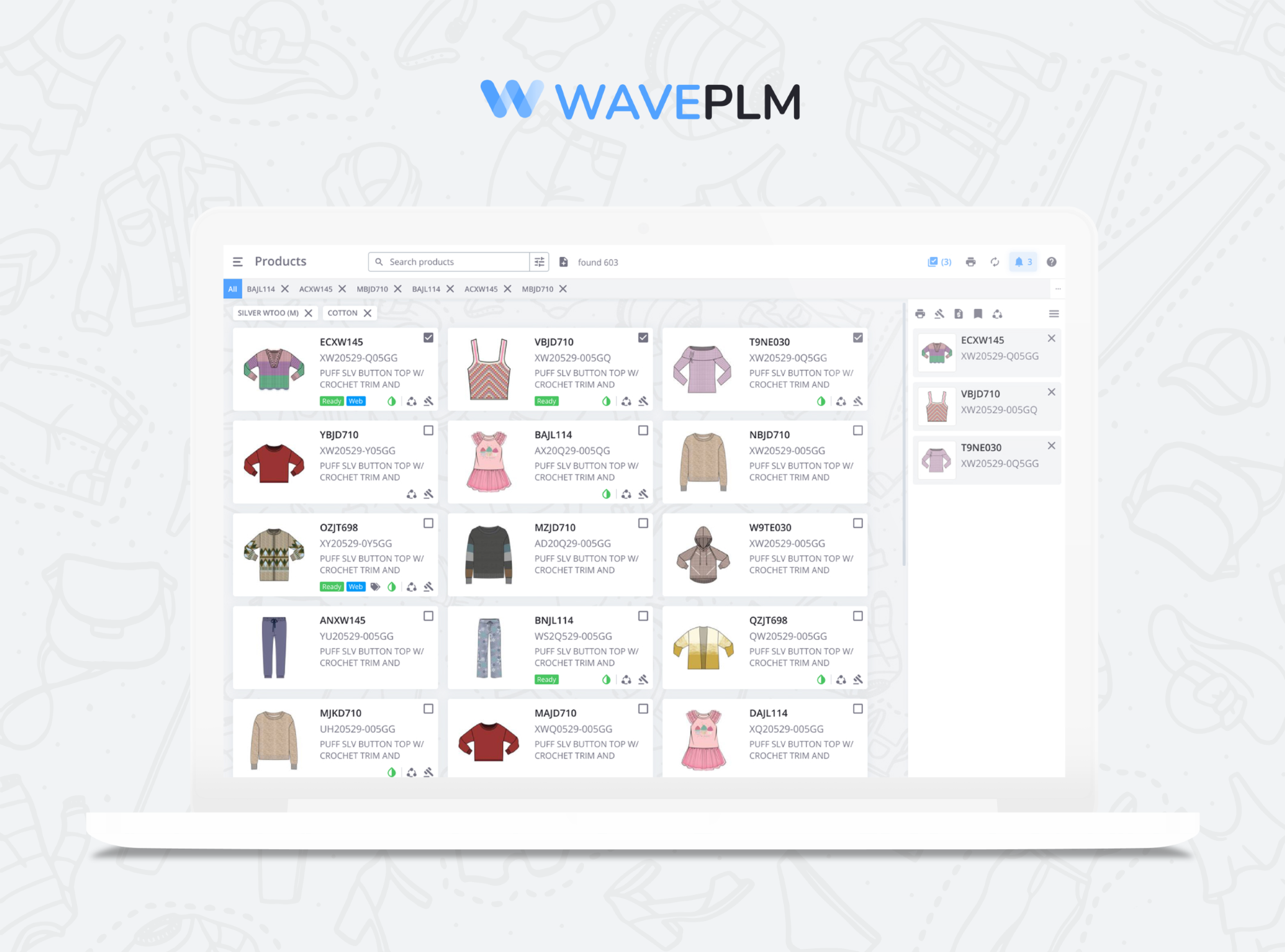
The fashion industry is evolving faster than ever. Global competition, rising sustainability standards, and the push for digital transformation demand tools that unite creativity with efficiency. Fashion brands now rely on advanced PLM software to manage every detail of the entire product development process. Modern fashion product lifecycle management is no longer a background system—it’s a strategic powerhouse that connects teams, reduces waste, and drives innovation.
What Is Fashion Product Lifecycle Management?
In the fashion and apparel industry, product lifecycle management (PLM) bridges design, development, sourcing, and production within one digital platform. Instead of juggling multiple spreadsheets and email threads, fashion companies rely on fashion PLM software to keep everything connected. This central hub ensures everyone—from designers and merchandisers to manufacturers and logistics teams—works with the same accurate, real-time data.
A PLM solution provides control and visibility at every step. Teams can share design files, manage tech packs, track product specifications, and communicate directly with suppliers. By integrating with design tools and enterprise resource planning (ERP) systems, PLM creates operational efficiency across the entire supply chain.
|
Traditional Workflow |
PLM-Driven Workflow |
|---|---|
|
Disconnected spreadsheets |
Centralized PLM platform |
|
Manual approvals |
Automated processes and alerts |
|
Limited visibility |
Real-time product data insights |
|
Repetitive sampling |
3D design and digital transformation tools |
With the best PLM software, teams streamline processes, improve quality assurance, and reduce costs within a single, all-in-one solution. Every decision becomes data-backed and aligned with the brand’s creative and sustainability goals.
From Traditional Fashion Cycles to Continuous Innovation
The two-season model no longer fits today’s fast-moving market. The rise of social media, e-commerce, and influencer culture has created a world where trends change weekly. Consumers expect instant access to new designs, which means fashion brands must adapt production strategies and internal workflows to keep pace.
PLM systems are essential for enabling this transformation. They support continuous innovation and rapid response to consumer trends. Fashion PLM systems allow design teams, sourcing partners, and manufacturers to collaborate in real time. Whether a designer adjusts a pattern in Paris or a fabric supplier updates pricing in Turkey, all information syncs automatically across the platform.
|
Old Fashion Cycle |
Modern Continuous Cycle |
|
Two collections per year |
Ongoing mini-drops |
|
Slow approvals |
Real-time feedback loops |
|
Manual updates |
Integrated digital ecosystem |
|
Fragmented teams |
Unified fashion PLM platform |
These connected ecosystems accelerate production, reduce time to market, and allow creative teams to test, refine, and release collections at unprecedented speed. Instead of rigid workflows, fashion companies gain flexibility, efficiency, and insight into every stage of their product lifecycle.
Key Capabilities of Modern Fashion PLM
Modern PLM for fashion combines innovation, sustainability, and technology to deliver smarter workflows. Here are the key benefits that redefine how the fashion business operates.
1. Real-Time Collaboration and Transparency
Design teams, sourcing specialists, and external partners work seamlessly within the same interface. PLM enables instant updates, reducing delays caused by miscommunication and outdated files. This transparency helps brands ensure compliance, maintain accurate specifications, and speed up approvals.
2. 3D Visualization and Material Selection
Integrated 3D design tools allow realistic garment visualization before a single fabric is cut. Designers can adjust patterns, test drape, and explore color management in a virtual environment. This capability reduces physical samples, shortens timelines, and supports sustainable material selection.
3. Tech Pack Automation
Automated tech packs eliminate repetitive manual work by updating details instantly across departments. Each change to a style or measurement syncs automatically, ensuring consistency and accuracy throughout the development process. As a result, product quality improves while production errors decrease.
4. Supply Chain Visibility and Efficiency
PLM strengthens supplier management and ensures transparency across the supply chain. Brands can track material sourcing, production timelines, and certifications—all from one system. This visibility improves procurement processes, reduces material costs, and builds stronger, more ethical supplier relationships.

|
PLM Capability |
Advantage |
|
3D Design Integration |
Faster sample approvals and reduced waste |
|
Tech Pack Automation |
Consistent product quality and fewer errors |
|
Material Tracking |
Traceable sourcing and lower material costs |
|
Workflow Automation |
Reduced product development costs and improved timing |
By using PLM to connect design, manufacturing, and logistics, fashion brands ensure their teams stay aligned and efficient across multiple regions and time zones.
Sustainability and the Fashion Value Chain
Sustainability has become the foundation of the modern fashion value chain. Consumers, regulators, and investors now expect measurable progress toward responsible production. Fashion PLM software gives companies the tools to monitor their environmental footprint across every product’s journey—from initial concept to retail distribution.
Advanced plm systems include detailed lifecycle management features that calculate water consumption, CO₂ emissions, and waste at each production stage. Material traceability tools verify whether fabrics come from certified or recycled sources. Production planning modules help reduce overproduction and streamline material procurement.
|
Sustainability Metric |
PLM Function |
|
Carbon footprint |
Calculates emissions per product and collection |
|
Waste reduction |
Monitors leftover materials and sampling waste |
|
Supplier compliance |
Tracks certifications and ethical sourcing standards |
|
Resource use |
Measures water and energy consumption in production stages |
Sustainability no longer means compromise. With the right plm solutions, fashion companies can align their creative processes with responsible production strategies. They gain data to prove compliance, reduce costs, and maintain trust among conscious consumers.
AI and Digital Transformation in PLM Systems
Artificial intelligence represents the next frontier in digital transformation strategy within the fashion industry. AI-driven plm systems analyze vast datasets—from market demands to sales patterns—and turn them into actionable insights. These tools not only enhance decision-making but also automate manual tasks that once slowed down operations.
|
AI Feature |
Function |
|
Predictive Analytics |
Forecasts upcoming fashion trends and sales performance |
|
Automated Grading |
Adjusts sizing for different regions automatically |
|
Workflow Optimization |
Identifies production delays and efficiency gaps |
|
Demand Forecasting |
Prevents overproduction and helps reduce costs |
|
Quality Prediction |
Uses historical data to predict potential product issues |
By combining AI with PLM software for fashion, brands can accelerate time to market, enhance collection development, and improve product quality. Machine learning models can even suggest sustainable material alternatives or predict which designs will perform best in specific markets. This integration marks a shift from reactive management to proactive, data-driven fashion innovation.
Why Fashion’s Future Depends on PLM Evolution
The future of the fashion business depends on how effectively it adopts plm software. Product lifecycle management PLM is no longer just a technical tool—it’s the creative and operational heart of a modern brand. It ensures that creativity and responsibility coexist throughout the entire product lifecycle.
By using advanced PLM software for fashion, brands can seamlessly integrate design, sourcing, production, and logistics. The result is faster innovation, stronger quality control, and greater sustainability. Leading platforms such as Centric PLM and Wave PLM are redefining how fashion brands manage design, development, and distribution.

As the apparel industry continues its digital transformation, the next generation of plm systems will merge AI, 3D design, and sustainability analytics into one cohesive platform. These tools will empower creative teams to make better decisions, meet market demands faster, and deliver exceptional value to both consumers and the planet.
Wave PLM supports fashion brands worldwide with advanced tools for product lifecycle management. Its intuitive plm solution connects teams, reduces errors, and enhances global collaboration. By providing visibility across every stage of production, Wave PLM helps fashion companies design, develop, and deliver smarter—accelerating innovation while ensuring sustainability and quality in every collection.





Leave a Reply